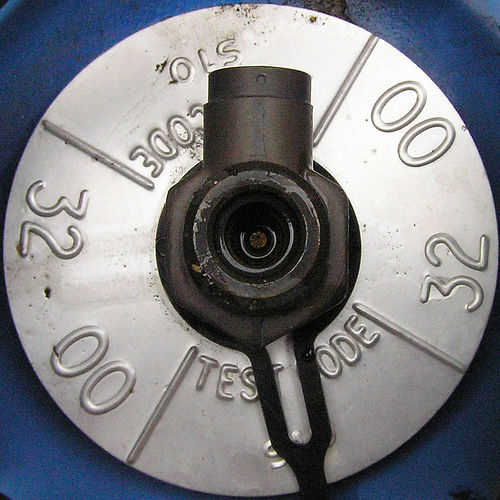CHALLENGE SOLVED: (See the Answer Below!)
Can you identify the mystery gas?
The label has come off a cylinder of gas in your laboratory. You know only that one species of gas is contained in the cylinder, but you do not know whether it is hydrogen, oxygen or nitrogen.
- To find out, you evacuate a 500 ml flask, seal it and weight it, then let gas from the cylinder flow into tit until the gauge pressure equals 1.00 atm.
- The flask is reweighed, and the mass of the added gas is found to be 1.16g. Room temperature is 22C.

What is the gas?
Instructions:
- Take some time and think about how to appropriately answer the challenge
- Submit your answer in the form below (you can only make a submission once)
- Check back! We'll post the best answers to the challenge.
Author's Response and Challenge Solution:
Its time to look at this month's ChEnected challenge problem!
The challenge was to Identify a mystery gas based on that gasses mass at a particular pressure temperature and volume. If this reminded you of the Idea Gas Law, you weren't the only one. A special kudos to Jack from Johns Hopkins University for using the Van Der Waals equation!
To solve this lets look at the solution submitted by Edward from the University of Manchester:
GAUGE pressure = 1atm = 2atm pressure absolute (which is what is needed for an ideal gas calculation, such that PV = nRT
Edward noticed right away that he needed to convert the gauge pressure given to to absolute pressure in order to satisfy the requirements of the ideal gas law.
2atm = 202650 Pa
500ml = 5x10^-6 m^3
R=8.314 m3*Pa/(mol*K)
Depending on your favorite version of the gas law constant R you could convert pressure and volume to the proper units. I don't know why you wouldn't go with ft^3*psia/lb-mole*Rankine.
absolute temperature = 22+273 = 295
Like pressure, temperature needs to be in absolute form. Kelvin in this case.
number of moles, n = PV/(RT)
=202650*500*10^-6 / (8.314 * 295)
= 0.0413 mol
molar mass of gas = 1.16g / 0.0413mol
approx = 28g/mol
Solving the Ideal gas law for n (moles) then dividing the measured mass (grams) we get the molecular weight (grams/mole). We would then turn to a periodic table of the elements remembering that all the possible gasses are diatomic under normal conditions here on earth. Nitrogen has an atomic mass of about 14, so diatomic nitrogen has a molecular mass of about 28.
so nitrogen! (N2)
Good work Edward!
This challenge is now open for comments.
And good work everyone who submitted their answers! Be sure to participate in next month's challenge. If you have an Idea for a ChEnected challenge problem we would love to hear it! Submit your suggestion to http://chenected.aiche.org/contribute
gas cylinder control image credit: Leo Reynolds



Comments
Report everyone, if not it is over 25-50, who has got the answers right.... will be fun to see fellow colleagues name here...
RCR, I will ask for permission to show names on the form from now on. This is a good idea but I had to do it without asking first.
"You know only that one species of gas is contained in the cylinder, but you do not know weather it is hydrogen, oxygen or nitrogen." "weather" should be "whether" :)
Thanks--fixed it!